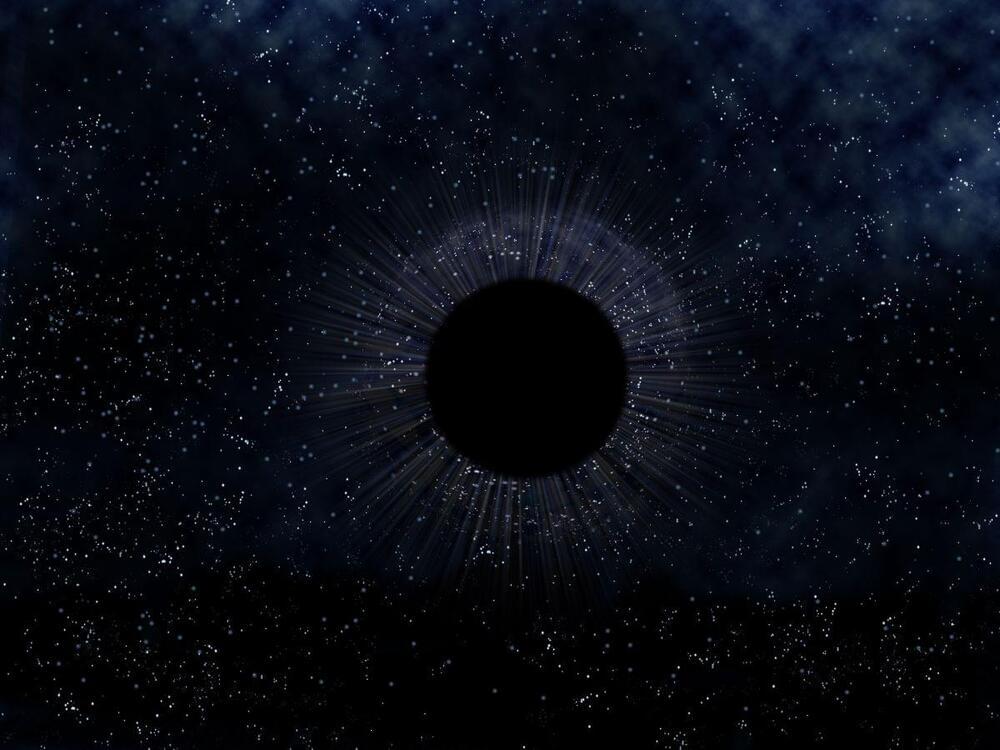War is changing. As drones replace snipers, we must consider the ethics of autonomous weapons making life or death decisions.
Get the latest international news and world events from around the world.

AI With a Human Eye — Possibilities Are Endless
Possibilities Are Endless — iHLS.
This post is also available in:  עברית (Hebrew)
עברית (Hebrew)
A new type of technology has recently been developed. AI technology that mimics the human eye. Researchers at the University of Central Florida have created a device for AI that replicates the retina of the eye. This new discovery can lead to AI that can immediately identify objects, such as automated descriptions of photos captured with a camera or a phone. This technology can potentially be used in autonomous robots and self-driving cars as well.
Scidaily.com reports that this technology performs better than the eye in terms of the range of wavelengths it can perceive, from ultraviolet to visible light and on to the infrared spectrum. The technology expands upon previous work by the research team that created brain-like devices that can enable AI to work in remote regions and space.
Robot realized itself and learned to use its body for the first time | High Tech News
👉For business inquiries: [email protected].
✅ Instagram: https://www.instagram.com/pro_robots.
You are on the PRO Robots channel and today we present you with some high-tech news. The first robot with self-awareness, a new breakthrough in the creation of general artificial intelligence, evolving robots, a Japanese home for a space colony, an unexpected turn in the fate of XPENG Robotics and other news from the world of high technology in one issue! Let’s roll!
0:00 In this video.
0:24 The first robot with self-awareness.
1:18 The first orbital flight of a prototype Starship.
1:56 PLATO algorithm.
3:00 New robot learning system.
3:53 Electronic skin for robots.
4:30 XPENG Robotics four-legged robot.
5:09 Artificial gravity architecture.
6:06 Project LINA — Lunar Outpost.
7:06 Electronic glove with suction cups.
7:52 Suspended system in a thermovacuum chamber.
8:28 Network of underground tunnels for unmanned cargo delivery.
9:29 Mass layoffs at Pudu Robotics.
10:12 Virtual organisms.
10:49 Engineers taught robotic arms to react unpredictably to dancers’ movements and music.
11:13 Quokka Robotics Cafe.
#prorobots #robots #robot #futuretechnologies #robotics.
More interesting and useful content:
✅ Elon Musk Innovation https://www.youtube.com/playlist?list=PLcyYMmVvkTuQ-8LO6CwGWbSCpWI2jJqCQ
✅Future Technologies Reviews https://www.youtube.com/playlist?list=PLcyYMmVvkTuTgL98RdT8-z-9a2CGeoBQF
✅ Technology news.
https://www.facebook.com/PRO.Robots.Info.
#prorobots #technology #roboticsnews.
PRO Robots is not just a channel about robots and future technologies, we are interested in science, technology, new technologies and robotics in all its manifestations, science news, technology news today, science and technology news 2022, so that in the future it will be possible to expand future release topics. Today, our vlog just talks about complex things, follows the tech news, makes reviews of exhibitions, conferences and events, where the main characters are best robots in the world! Subscribe to the channel, like the video and join us!
The latest robotics and future technologies | All technology news for July 2022 in one issue!
You are on PRO Robots Channel, and today we present you with high-tech news. An exhibition of robot chefs in Japan and novelties from the robot exhibition Automate 2022 in the USA, new unusual robots for space, the unexpected discovery of a robot that visited the asteroid Bennu, and the first Italian humanoid robot. All the most interesting technology news in one issue!
#prorobots #robots #robot #futuretechnologies #robotics.
More interesting and useful content:
✅ Elon Musk Innovation https://www.youtube.com/playlist?list=PLcyYMmVvkTuQ-8LO6CwGWbSCpWI2jJqCQ
✅Future Technologies Reviews https://www.youtube.com/playlist?list=PLcyYMmVvkTuTgL98RdT8-z-9a2CGeoBQF
✅ Technology news.
https://www.facebook.com/PRO.Robots.Info.
#prorobots #technology #roboticsnews.
PRO Robots is not just a channel about robots and future technologies, we are interested in science, technology, new technologies and robotics in all its manifestations, science news, technology news today, science and technology news 2022, so that in the future it will be possible to expand future release topics. Today, our vlog just talks about complex things, follows the tech news, makes reviews of exhibitions, conferences and events, where the main characters are best robots in the world! Subscribe to the channel, like the video and join us!
✅ Instagram: https://www.instagram.com/pro_robots.
The Difference Between Brushed and Brushless Motors
Circa 2020 Brushless motors are awesome some can reach 50,000 rpm or higher they seem to be the next generation after brushed motors.
Brushed or brushless motors? Which one would you choose and why?

Research finds mechanically driven chemistry accelerates reactions in explosives
Scientists at the Lawrence Livermore National Laboratory (LLNL) Energetic Materials Center and Purdue University Materials Engineering Department have used simulations performed on the LLNL supercomputer Quartz to uncover a general mechanism that accelerates chemistry in detonating explosives critical to managing the nation’s nuclear stockpile. Their research is featured in the July 15 issue of the Journal of Physical Chemistry Letters.
Insensitive high explosives based on TATB (1,3,5-triamino-2,4,6-trinitrobenzene) offer enhanced safety properties over more conventional explosives, but physical explanations for these safety characteristics are not clear. Explosive initiation is understood to arise from hotspots that are formed when a shockwave interacts with microstructural defects such as pores. Ultrafast compression of pores leads to an intense localized spike in temperature, which accelerates chemical reactions needed to initiate burning and ultimately detonation. Engineering models for insensitive high explosives—used to assess safety and performance—are based on the hotspot concept but have difficulty in describing a wide range of conditions, indicating missing physics in those models.
Using large-scale atomically resolved reactive molecular dynamics supercomputer simulations, the team aimed to directly compute how hotspots form and grow to better understand what causes them to react.

Researchers develop miniature lens for trapping atoms
Atoms are notoriously difficult to control. They zigzag like fireflies, tunnel out of the strongest containers and jitter even at temperatures near absolute zero.
Nonetheless, scientists need to trap and manipulate single atoms in order for quantum devices, such as atomic clocks or quantum computers, to operate properly. If individual atoms can be corralled and controlled in large arrays, they can serve as quantum bits, or qubits—tiny discrete units of information whose state or orientation may eventually be used to carry out calculations at speeds far greater than the fastest supercomputer.
Researchers at the National Institute of Standards and Technology (NIST), together with collaborators from JILA—a joint institute of the University of Colorado and NIST in Boulder—have for the first time demonstrated that they can trap single atoms using a novel miniaturized version of “optical tweezers”—a system that grabs atoms using a laser beam as chopsticks.


Colombia Enlists Ripple Labs to Put Land Deeds on Blockchain
Colombia’s government has launched a partnership with Ripple Labs, the company behind the cryptocurrency XRP, to put land titles on the blockchain, part of a plan to rectify land distribution efforts so unfair they’ve led to decades of armed conflict.
The project, built by blockchain development company Peersyst Technology and Ripple, will permanently store and authenticate property titles on Ripple’s Ledger—its public blockchain.
This will help eliminate bureaucracy and hopefully make land distribution more equal, Ripple Labs and Peersyst Technology told Decrypt.

AI can reveal new cell biology just by looking at images
Humans are good at looking at images and finding patterns or making comparisons. Look at a collection of dog photos, for example, and you can sort them by color, by ear size, by face shape, and so on. But could you compare them quantitatively? And perhaps more intriguingly, could a machine extract meaningful information from images that humans can’t?
Now a team of Standford University’s Chan Zuckerberg Biohub scientists has developed a machine learning method to quantitatively analyze and compare images—in this case microscopy images of proteins—with no prior knowledge. As reported in Nature Methods, their algorithm, dubbed “cytoself,” provides rich, detailed information on protein location and function within a cell. This capability could quicken research time for cell biologists and eventually be used to accelerate the process of drug discovery and drug screening.
“This is very exciting—we’re applying AI to a new kind of problem and still recovering everything that humans know, plus more,” said Loic Royer, co-corresponding author of the study. “In the future we could do this for different kinds of images. It opens up a lot of possibilities.”